Flying Through Canada for Dummies
by Larry Maile (4AK6)
Last updated: July 27, 2025
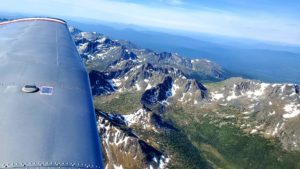
An amazing cross country adventure.
There are two aspects of a flight through Canada that have to be considered. The first is the legal/customs/landing rights issues (better known as bureaucracy), and the second is what the conditions really are in the few towns that you can land at.
Bureaucracy:
There are two parts to getting into, and out of Canada that must be performed, USA first, then Canada:
- USA – eAPIS: this is the U.S. Customs and Border Protection website that you have to use to declare your departure from the U.S., and your arrival. The website is: eapis.cbp.dhs.gov/eapis/auth. YOU MUST USE eAPIS. There is no manual system anymore.
-
- If you don’t have an account, you can enroll. If you have one, you can log on and enter your airplane. There are notices of departure, and arrival. You have to do the departure application before leaving the U.S. It has to be done 2 to 24 hours before you leave or arrive.
- You have to declare your crew, plane, stops you are going to, or coming from in Canada. You do not have to actually go to those places if weather or plans change (so don’t feel locked in) but U.S. Customs will ask where you have been when you get back in the U.S. Note: you and your fellow pilot are crew, and not passengers. Once you submit this, they will send you an email that you are approved to depart if leaving the U.S., or that your application has been received (arrival in the U.S.)
- The arrival receipt is NOT permission to land back in the U.S. That MUST be done through a phone call to the Customs and Border Protection office at the Port of Entry you intend to land at. In the Northwest, we have used Spokane International, and Dorothy Scott (Oroville, Washington). There are others, including Moses Lake airport and Felts Field in Spokane.
- Word to the wise: everyone but Oroville work regular hours and charge you callout time if you are beyond those hours. Oroville (and Dorothy Scott) is a 24 hour border station. If you don’t call to arrange your landing and receive permission to land, you may be intercepted. Try to arrive at the time you said, or call them to let them know. If you arrive early, you are supposed to circle in the pattern until your approved landing time. They are not too rigid about that but you ARE supposed to stay in your plane when you land until the Officer shows up.
- A note on coming to Alaska from Canada: you can clear customs at Northway, Anchorage, or Fairbanks. If you have long enough legs you can go to Ted Stevens or Fairbanks International. If not, you can do a bypass and land one place to take on fuel, but you may not talk to anyone, got to the restaurant, etc. Get in your plane and fly on. We try to land in Northway, but they are currently saying they don’t have enough staff to come out and meet you, so it is Anchorage or Fairbanks. But try Northway (Port Alcan) and you may get lucky. You must call Port Alcan to arrange for an agent to meet you (907) 774-2252. The website says between 9 am and 3 pm. Depending on staffing and who knows what else, they may tell you that you MUST arrive at either 9 or 3 (nothing in between). This has happened to us twice. Flight plan accordingly.
- US Customs sticker: to arrive in the U.S., you must have a customs sticker for your plane. It can be ordered through: decals@cbp.dhs.gov. This registers your plane with customs.
- Canada: If you don’t have CANPASS, you must land at an Airport of Entry in Canada. Whitehorse is the only one that actually is open in the Yukon right now, although they say you can enter by landing at Dawson City in the summer. Never tried it though.
-
- There are two parts of your declaration to enter Canada. You must call to declare your entry to Canada via telephone to Canada Border Services Agency: 226.7277. This is required 24-48 hours before you plan to arrive. I usually call the night before. Plan to arrive during regular business hours. If flying north to south, that will probably be Whitehorse. If you are coming from the South, your port of entry may be either Kelowna, but may also be Nanaimo if you are flying the water route. They can be either friendly or not so much. If you have CANPASS, though, you can land at any port of entry airport. We use Penticton.
- After you have done that and you have planned your flight, THEN you have to give them an arrival time in a second phone call. When you land, if the Customs agent is not there waiting, you have to call them. They may clear you without coming out, but if you have a gun with you they will come out unless you have been through multiple times and the gun is listed in their system already. I carry a .30-30 Marlin. Bolt action rifles are allowed as are lever action. They begin to get more touchy if you have any kind of semi-auto. DO NOT BRING A HANDGUN! Think bolt action hunting rifle with a wood stock. Any type of AR is NOT allowed. You will also probably be searched if you have a concealed carry permit in the U.S. BTW, it costs $25 Canadian to bring a gun to Canada.
- CANPASS: This is probably the best thing you can invest $25 in. You apply, wait up to 3 months, and get issued a canpass. This lets you land at any airport of entry in Canada and call customs to tell them you have arrived. They will ask you the usual questions, including the gun, bill you and send you on your way. This is especially helpful if you are landing after business hours, don’t want to divert to a port of entry that is permanently staffed, or don’t have enough gas to get to one due to winds or whatever, i.e. Whitehorse from Tok.
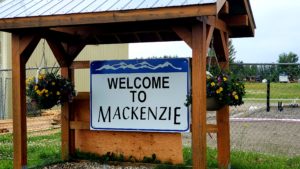
MacKenzie Airport, the fuel stop south of The Trench
Life in Canada, by city
We are used to many airports and cities being General Aviation friendly, with FBO’s, airport cars, taxis, facilities. Not so much in Canada. I will go through the pro’s and con’s of the places we’ve stayed along the way.
- Burwash: This is a gravel strip on the west end of Kluane Lake. It is a long runway with no services, but there is a weather station. There is a pay phone you can use to call customs. You can always land on the road at Destruction Bay and taxi to the gas pump in a pinch.
- Whitehorse: This is a nice town. There are multiple taxi services to take you downtown, where most of the hotels, restaurants, and stores are.
-
- Car rental: There are several car rental companies there. Some have counters in the airport. They are only open when flights arrive. Otherwise, it is taxi ride. Lyft and Uber are not dependable.
- There are two hotels right across the road from the airport. If you bring a pet, you have to go downtown though. The Sternwheeler and one Quality Inn take pets. The Sternwheeler has a bar, and the bartender makes the best Old Fashioned’s in Canada. This is not an exaggeration.
- For those of you who like whiskey, Two Brewers is the number two rated distillery in Canada. They are open during the day and you can visit the tasting room.
- There is interesting history related to the Gold Rush. There is a museum that is worth visiting.
- The Bad News: there are 6 transient tiedowns at the Erik Nielson airport. One is broken, two have no tail tiedowns. Two of the others are taken by locals at least part of the time. AND, they don’t plow them in the winter, so you have to dig out your own spot. They have put overflow parking by the self-service fuel. They are tires with concrete. There are still no tail tiedowns, but you can move them around.
- Lifesaver: Rhodan Air is a repair shop on the field next to the transient tiedowns by the Tower. Justin will let you park in front of his hangar door if you call and arrange it and it is in a sheltered spot from the wind. He will string an extension cord out to plug in your plane ($25 Canadian per night). He is also a good guy to call to ask what the weather really is doing.
- Teslin: gravel strip between Whitehorse and Watson Lake along the VFR route. No services. It is about 2 miles to town and the gas station, and you have to walk.
- Watson Lake: Not a great town with nothing really to do if you are stuck there. The airport is a long way from the town. There are three hotels in town. Andreas’ will pick you up from the airport for $50 in their van if you call and arrange it. They also have a restaurant. Don’t eat there. There is a Chinese restaurant next door. Pick that one. There are two other hotels. The Friendly Hotel is nice. Andreas and the Friendly take pets.
-
- The weather is crappy in the spring and fall when the lake is open. There is usually freezing fog cover and LOW ceilings. If you need gas to fly the Trench, this is your only option after Whitehorse. Otherwise, you are going on to Ft. Nelson.
- The terminal is nice. It has as a pilot lounge with couches you can sleep on waiting out the weather.
- There is only one tiedown. Bring your own screw in tiedowns if you need one.
- There is a lodge operation at the airport. They have a dirt strip about 90 miles southeast of Watson Lake. They will sell you gas if it is an emergency. The strip is short though. You are not going to get your Cherokee or Bonanza back out of it most likely.
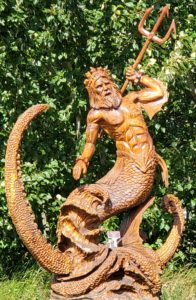
Weathered in, in Chetwynd, BC? Take the walking tour of the log carvings placed around the town (walking map at the hotels). Chetwynd is the World Carving Capital.
- Toad River: This is midway between Watson Lake and Ft. Nelson on the VFR route, i.e. the Alaska Highway. 1600 ft. rough gravel strip. No services, but you can get gas across the road at the gas station. There is a good restaurant that serves buffalo burgers and probably has the worlds largest baseball hat collection. They have cabins. If you are late arriving, you can go to a cabin and pay in the morning.
- The Trench: while this is not a town, it is a direct way southeast and saves time over going around through Ft. Nelson, Ft. St. John, etc.
-
- In our Warrior it takes just under 4 hours between Watson Lake and Mackenzie, There is no gas in between other than the above lodge in an emergency, and in season. Plan accordingly.
- There are gravel strips at Ft. Ware (about 2.5 hours South of Watson Lake), Tsay Key Dene, Ft. Graham, and Ingenika. None have services. Tse Kay is not outsider friendly. Other than those, there are logging roads to land on south of Ft. Ware.
- Call the Fuel Stop at Mackenzie. They will tell you what the weather is really doing. The published weather reports are usually not accurate.
- Nelson: Airport is about 8 miles from town (or so). They have a taxi, but the driver drinks (rumor has it) and doesn’t answer much of the time I gather. If pets, stay at the Super 8. If none, stay at the Woodland. They have a five star restaurant, chef from Dubai and the two most beautiful women in Canada. Both hotels will pick you up from the airport during regular business hours if you pre-arrange.
-
- A note about wildlife: there are black bear everywhere in Ft. Nelson. On one trip, we saw 8 on the way to town. They are in town too. We also have had to hold while the airport staff chased the “elk” off the runway.
- Another oddity: they don’t move equipment off the runway if you are landing. From Ft. Nelson Radio: “they are working on the runway. Just land beyond them.”
- There are four transient tiedowns. Two are taken by locals, but you can roll the concrete filled tires around for the others if you don’t like where they are.
- St. John: this is a large city. It has everything. The taxi ride costs about $60. There is a really nice resort hotel and casino there. It is worth staying there.
-
- The FBO has a couple tiedowns over by someone else’s hangar. They let you plug in your plane to the other guy’s hangar outlets. No one complained.
- The tiedowns are oil field drill bits. You may have to move them where they want them.
- They charge for transient parking: It is about $12/day I think and there are landing fees now. Landing fees are $21 Canadian. They will find you and bill you, usually about 60 days later. Call the nice lady in finance at Peace River Airport and pay by credit card.
- If you plan to come back to the airport earlier than they open, get the gate code BEFORE you leave. They also don’t show up on time. Fill up the night before because of this or you may be standing out in the cold outside the fence waiting for someone to show up and help you.
- Chetwynd: this is a small airport on the VFR route between Ft. Nelson/Ft. St. John and Mackenzie/Prince George. We got grounded there for two days on one trip. No gas, but you can walk down to the gas station (about half a mile) for auto gas. Chetwynd is also host to the Wood Carving World Championships. When we were there, there were 187 wood carvings along the street. They are unbelievable works of art and worth seeing by themselves.
-
- There are several hotels. Call ahead to see if they have room. None are great.
- There is a Tim Horton’s where the food is predictable. Otherwise, eat at the River Rock. There are many Chinese restaurants. Not recommended.
- There is a weather station there. The same lady has been working there forever. She is helpful and knows everything about Chetwynd.
- There are no tiedowns for transients. There are some local planes there. Sometimes a spot is open. Otherwise, you need you screw-in tiedowns on the grass by the weather station.
- Mackenzie: The fuel stop is open 8 to 5ish Tuesday to Saturday. There is no self-serve fuel. There is a callout number though if you arrive after hours or days they are closed. The current airport lady will also take you to town. I gave the last airport guy $50 to drop us off and pick us up from the hotel. We’ve stayed multiple times at the Royal Oak Inn. The Office Lounge next door is a great restaurant.
- Prince George: This is a big city for the Canadian west. There are several taxi services, and some pretty nice hotels downtown. There is a lot of fog there from the oil refineries and pulp mill when it is cold.
-
- There is no self-serve gas, but the fuel service has been attended the times we were there.
- The Northern B.C. flying club has tie downs. It is on the west end of the field. They charge $5. Put the cash in the box. The tiedowns are in the grass, and you may have to push your plane uphill to get into them. They have a pilot lounge that is pretty nice. If you order a taxi, you have to specify that you are at the flying club or they will go to the terminal.
- Quesnel: It is a good sized town with taxis, hotels, several restaurants.
-
- I don’t know about transient tie downs. There are quite a few GA planes there though. The gas is self-serve. Sometimes the pump works too. FYI, on this pump, it works backwards. That is, you put in your tail number, select pump, and THEN pay.
- There is a pilot lounge. It has couches that you can sleep on.
- They don’t recommend night operations UNLESS all three beacons on the surrounding hills are working, and they note that the lumber operation at the end obscures the south end of the runway when conditions are right, i.e. colder temperatures make steam/fog obscure the south end of the airport.
- Williams Lake: Nice airport with self-serve gas. The town is quite a long way from the airport. There is a taxi, the Town Taxi. No one recommends them, but we had good luck with them. FYI: the Friday night driver is also the Ambulance driver. If he is on a call, you may wait a while.
-
- There are several hotels. They all seem o.k. although we’ve only stayed at the Ramada. They have a great Indian restaurant. There is also a pub next door with live music on the weekends. The Sandman is closer to downtown if you want to walk around or want a bigger selection of restaurants, a bank, etc. .
- There are no tiedowns. You push your plane across the ramp and park in the grass. The wind is pretty mild there compared to other places along the way, but you may need your screw-in tiedowns anyway.
- Downtown is pretty nice, and is sort of historic.
- Kelowna: This is the biggest city along the VFR route. There are lots of hotels, with airport shuttle. There is no self-serve, but the FBO is nice and they are helpful.
-
- There are tiedowns at the flying club. Pay in the yellow box on the fence. They will try to charge you again anyway.
- Kelowna is an island of calm in windy conditions. It is not uncommon to be calm at the surface when you have been flying through gusts to 30 or more up above. If you have to choose a landing airport in strong winds, pick Kelowna over Penticton.
- They are towered, and their airspace extends west over Okanagan Lake. Tell them where you are going (even if above or below their airspace), because they will give you traffic advisories, and depending on the controller, if you don’t they will see you on radar and call you or suggest to other pilots that you are an idiot.
- The Downtown area is nice, with multiple restaurants, breweries, and other businesses. In the winter, they have a winter lights program. It is a destination worth stopping at on a mini-vacation.
- Penticton: Nice airport, again, no self-serve but the airport guy is helpful. This is the last stop before the border. It is a nice town with multiple hotels, taxi, etc.
- Dorothy Scott (Oroville), just on the other side of the border: As I mentioned before, this is the easiest place to clear customs and then you can go anywhere you want. They are open 24 hours. Call them for landing permission (when your eAPIS notice of arrival is denied landing rights) and give them a time. Call back if you aren’t going to make it on time or at all (and then do the eAPIS again if you are not within 2 hours of your projected landing time), call again for landing privileges.
-
- They have self-serve. It is way cheaper than most other places in Washington. The runway is fair.
- There is a guy who flies a helicopter in the valley by Dorothy Scott. We have had conflicts with him. He doesn’t talk on the radio, and he doesn’t listen either. Watch for him, and if you want to take matters into your own hands, feel free.
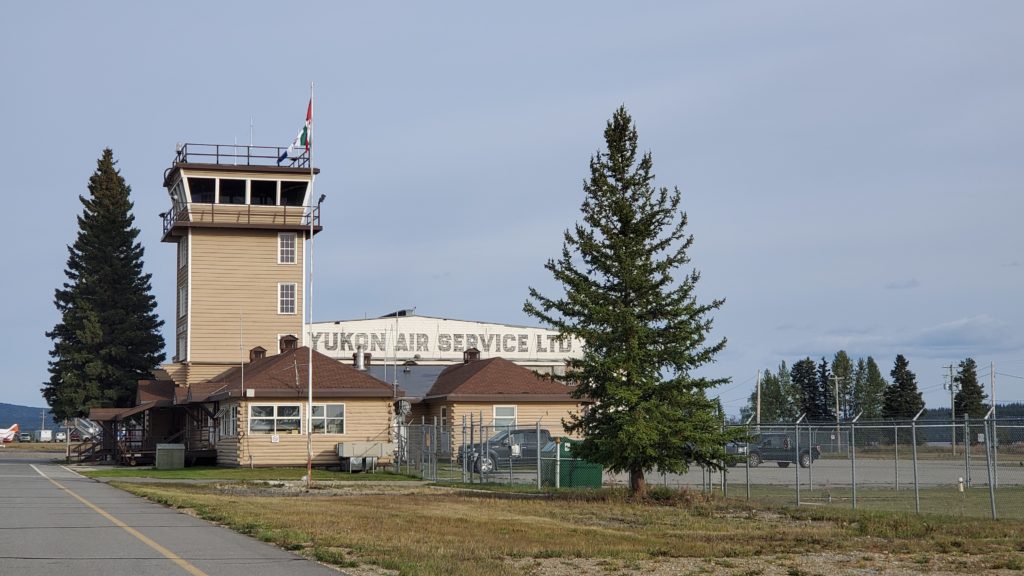
Watson Lake Airport, Yukon. Great fuel stop on the north side of The Trench or passing from Ft Nelson to Whitehorse.
Communications: Communications are different in Canada.
- You are required to file a flight plan in Canada. You can file in Foreflight and ATC will open it when you take off, and give you a wheels-up time over the radio. You can also call the Flight Information Center to file it. Phone Numbers: 376.8706 (Kamloops), 866.541.4102 (Edmonton). Call Kamloops when filing in Whitehorse.
- There are very few towered airports: Whitehorse, Prince George, Kelowna. The other airports have a “radio.” These are not flight service stations (mostly). They are attended weather stations and provide advisory services about traffic, weather, etc.
- Some airports have automated weather. Some don’t, but the major hubs do, Whitehorse, Watson Lake, Ft. Nelson, Ft. St. John, Prince George, Williams Lake, Kamloops, Kelowna, Penticton.
- If you don’t have Foreflight, Garmin Pilot or something similar, you can buy the hardcopy Canada Supplement that is just like the U.S. Supplements or Airport Directories, e.g. Alaska Supplement.
- If you have Foreflight, you may want to buy the Canada subscription. It cost $100 annually. Otherwise, you have paper charts, or fly the VFR route, or by traditional navigation.
- Each airport has a “zone.” They may be Delta or Charlie airports, but the “zone” is mostly the same. They are usually a five mile radius from the airport. “Radio” or the Tower want you to report when you are entering the zone and leaving.
- There are different levels of oversight.
-
- The radio/weather stations at each airport.
- The Flight Information Centers (Flight Service Stations), e.g. Edmonton Radio, Pacific Radio, Kamloops Radio, Whitehorse Radio. Sometimes they are attended by the other stations after hours, e.g. Edmonton, Kamloops, Vancouver. Just like here, you can call on the frequency listed on the chart for that specific airport and someone will answer, e.g. Edmonton Center, Anchorage Center, Edmonton Center, Vancouver Center, Seattle Center.
- You can almost always reach someone, especially the Centers and Flight Service Stations. Exceptions are low altitude in the trench, and on the VFR route at low altitude.
- NavCanada: this is a story in and of itself. They provide weather, but they are right about half the time. If you call a Flight Information Center, the briefers generally can do projections that are somewhat more accurate. Some of the briefers are better than others.
VFR route: This is the low level route marked on your charts that is supposed to be better in questionable weather. They generally run along the Alaska Highway and along rivers and roads. It is a good way to go if you want to go lower and slower, or if the ceiling is too low to go direct. It is supposed to be open more often than the direct routes over the mountains.
Canadianisms:
- Many airports do not have parallel taxiways. There is often only one way off the active runway, so you have to back taxi after landing and
before taking off. Announce your intentions. Just like here, some of the pilots, especially in “ultralights (light sport airplanes here) do not talk.
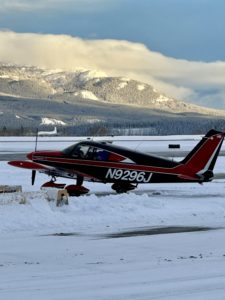
N9296J clearing customs at Whitehorse, Yukon. Some of you old timers will recognize this plane.
- They say the N of your N number as part of your call sign.
- When reading back frequencies, they say the decimal point, e.g 123 decimal 5.
- When announcing distance from the airport many pilots give the distance in miles “back” and the reporting point they are at or near. For example, Whitehorse radio, November 9296 Juliet, 5 miles back, approaching Cousins” (dirt strip you fly over heading to the main airport, or the Blue Bridge, leaving Whitehorse going southeast). You can just report distance like in the U.S. and a direction, but you won’t necessarily know where the other planes are if you don’t know the reporting points (if listed as reporting points on the chart) or the local area. They don’t always give a direction they are from airport because they assume everyone knows the area. If towered, they will sequence you. If uncontrolled (most of them), you have to do that yourself. Radio will tell you if there is any other traffic in the area, if they know.
Flying through Canada is not difficult, but things are different there. There are not many airports and there are NO ALTERNATES if you have to divert or can’t get in. The decision point is at halfway between airports because there may not be anywhere to land short of your planned airport besides the road.
All of that being said, flying through Canada is a bucket list trip. People are helpful, the scenery is outstanding, and there are some nice towns along the way. With the exchange rate, everything is cheaper than the U.S. You can use credit cards for most everything, and your phone works in a lot of places without an international plan.

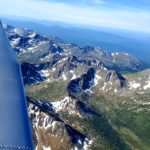
Good accurate and informative article worth saving for future reference, especially with regard to Entry and Exit Regulations.
(I’m a Canadian Resident)